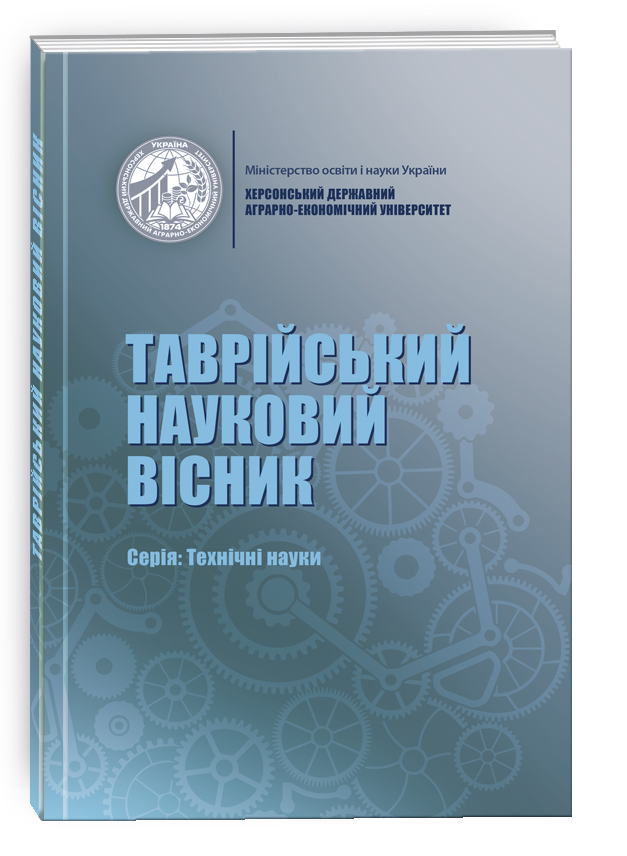RESEARCH ON FACTORS INFLUENCING THE TECHNOLOGY OF UNDERGROUND STRUCTURE CONSTRUCTION USING THE GRAVITATIONAL EXTRUSION METHOD
DOI:
https://doi.org/10.32782/tnv-tech.2025.1.56Keywords:
gravitational extrusion technology, reinforced concrete structures, monolithic construction, hydraulic structures, underground structures, diaphragm wall method, slip form, influencing factors, clay slurry, concretingAbstract
The article presents the results of a study on the technology of gravitational extrusion of reinforced concrete structures, designed for the construction of underground reinforced concrete structures in challenging hydrogeological conditions. The proposed technology synthesizes the advantages of the diaphragm wall and slip form methods, which will improve the quality of monolithic structures compared to the diaphragm wall method and enhance their waterproofing properties. This highlights the broad prospects for applying this technology in the construction of locks, pumping stations, shoreline protection walls, and foundations in flood-prone areas.The study analyzed groups of factors influencing the technology of gravitational extrusion of reinforced concrete structures, namely: factors of structural design solutions, environmental factors, factors of formwork system design, factors of the physical and mechanical properties of concrete mix, as well as technological, organizational, economic, and emergency-related factors.A preliminary assessment of 54 influencing factors was conducted using a ranking method. The ranking of factors was carried out based on decimal dimensionless scales of “Importance” and “Desirability.” The “Importance” scale assessed factors based on their criticality, i.e., the extent to which their values affect the feasibility of using the gravitational extrusion construction method.The “Desirability” scale assessed factors based on their necessity, i.e., the extent to which their values influence the efficiency and feasibility of the gravitational extrusion construction method.As a result, 16 key factors affecting the construction of underground reinforced concrete structures using gravitational extrusion were identified. Subsequently, based on an analysis of scientific and technical sources on the application experience of the diaphragm wall method and the slip form construction method, the variation ranges of the 16 key influencing factors on the gravitational extrusion technology were determined.The obtained results can be used for further research and improvement of the technology for constructing underground reinforced concrete structures using gravitational extrusion.
References
Спосіб зведення монолітної будівельної конструкції: пат. A 2011 13024 Україна : МПК E04G 11/06. № A 2011 13024; заявл. 07.11.2011; опубл. 25.12.2013, Бюл. № 24. 4 с.
Прийняття рішень з використанням експертних оцінок при розв’язуванні задач в ГВС : лекція 8 / [уклад. І. Ю. Черепанська, В. А. Кирилович, А. Ю. Сазонов, Б. Б. Самотокін] ; Житомирський державний технологічний університет. Житомир : ЖДТУ, 2015. 285 с.
Foundation Engineering Handbook / H.-Y. Fang (ed.). New York : Wiley, 2002. 850 с. С. 102–115.
Concrete Construction Engineering Handbook / E. G. Nawy (ed.). Boca Raton : CRC Press, 2008. 1072 с. С. 430–445.
Hurd M.K. Formwork for Concrete : ACI Manual. 7th ed. Farmington Hills : American Concrete Institute, 2005. 480 с.
Галенко Є. О., Махиня О. М. Класифікація ковзних опалубних систем. Шляхи підвищення ефективності будівництва в умовах формування ринкових відносин. 2023. № 52(1). С. 157–170. Режим доступу:http://ways.knuba.edu.ua/article/ view/297567/290476.
ДСТУ Б Д.2.2-1-2008. Ресурсні елементні кошторисні норми на будівельні роботи бетонні та залізобетонні конструкції монолітні. Збирання і розбирання опалубки (збірник 6). [чинний з 1.08.2008 р.]. Вид. офіц. Київ : Мінрегіонбуд України, 2008. 35 с.
Якименко О. В. Земляні роботи : навч. посіб. Харків : ХНУМГ ім. О. М. Бекетова, 2016. 168 с.
Bowles J.E. Foundation Analysis and Design. 5th ed. New York : McGraw-Hill, 1996. 1024 с. С. 730–732.
Tomlinson M.J. Foundation Design and Construction. 7th ed. London : Prentice Hall, 2001. 520 с. С. 312–314.
Махиня О., Галенко Є. Теоретичні дослідження монтажної ваги армовидавлювальних конструкцій. Основи та Фундаменти / Bases and Foundations. 2024. № 49. С. 77–85. DOI:https://doi.org/10.32347/0475-1132.49.2024.77-85.
Kirsch K., Bell A. Ground Improvement. 2nd ed. Boca Raton : CRC Press, 2013. 414 с. С. 141–142.
Neville A.M. Properties of Concrete. 5th ed. London : Pearson, 2011. 832 с. С. 167–168, 244–246.
Mindess S., Young J.F., Darwin D. Concrete. 2nd ed. Englewood Cliffs : Prentice Hall, 2015. 730 с. С. 109–110.
Ramachandran V.S. Concrete Admixtures Handbook: Properties, Science, and Technology. 2nd ed. Park Ridge (N.J.) : Noyes Publications, 1995. 1138 с. С. 167–187.
ACI Committee 304. Guide for Measuring, Mixing, Transporting, and Placing Concrete : ACI 304R-00. Farmington Hills : American Concrete Institute, 2000. 53 с. С. 8–12.
Rossnagel W.E., MacDonald J., Higgins L. Handbook of Rigging: Lifting, Hoisting, and Scaffolding for Construction and Industrial Operations. 4-е вид. New York : McGraw-Hill Professional, 1988. 530 с. ISBN 978-0070539419







